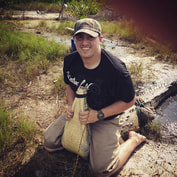|
NORTHERN HARDWOOD FOREST
Broadleaf forests, is the name generally used for hardwood trees. These are mainly found in the northern Belize River valley. This is predominately a lower area, less than 300 feet above sea level. The dominant soil are underlain, at various depths, by limestone rock. Annual rainfall is less than 81.3 inches, and in most years, March, April and May are noticeably dry, with less than 5 inches of rainfall per month. The average temperature, for much of the year, is about 73.2 degrees F during the months between November and February. Since this temperature is much wider than that found in a truly tropical environment, and the three-month dry season can be quite pronounced. SOUTHERN HARDWOOD FOREST Broadleaf forests found mainly on the limestone foothills lying south and east of the Maya Mountains. Here, one can find the largest continuous foothill forests, in the Columbia River Forest Reserve. The average annual rainfall exceeds 150 inches. The dry season is usually brief, three weeks to about one-and-a-half months. The average daytime temperatures are relatively uniform, ranging from (77 degrees to 86 degrees F), and cool night temperatures are rare. The forest covering most of the foothills and some adjacent lowlands has been designated as sub-tropical to tropical humid evergreen broadleaf forest. MOUNTAIN & PINE RIDGE The Mountain and Pine Ridge area, has fairly distinctive vegetation consisting mainly of pine forest and Savannah grassland. Mountain Pine Ridge vegetation occurs in the Maya Mountains upland in localities where the soils are mainly derived from granitic rock. This landscape is ancient and most of the soils are deep, very acidic, strongly weathered, and leached of very essential nutrients to support broadleaf forest trees. The vegetation is a patchwork of coniferous trees, Savannah grasses, hedges and a few scattered populations of woody trees and shrubs. HIGH ELEVATION SOUTHERN MAYA MOUNTAINS This region of Belize, is difficult to access and is characterized by a mountainous terrain, steep slopes, deeply incised valleys, and rocky watercourses partly filled by debris caused by natural erosion. This type of terrain extends from about 1,320 feet above seal level to a little over 3,300 feet. It is expected to be cooler an perhaps wetter than any other climatic region of Belize, with night temperatures in the (50 degrees F to 70 degree F), and annual rainfall to be somewhere around (250 inches to 300 inches). Regular strong winds are a major factor in this area, and periodically, the forest cover has been locally devastated, by winds of hurricane force. The soils are mainly derived from hard metamorphic, sedimentary rocks. Large quartz veins are common, in this region. Most soils are thin, rocky, with very steep slopes. THE CAYES The cayes are a cluster of offshore islands, with a total land area of approximately 116 square miles. The rainfall is about 40 inches per year in the northern cayes and about 65 inches in the southern cayes. These are islands are just as a few feet above seas level. The land base of these islands, is usually coral sand with a local accumulations of ragged coral rock rubble. Coconut palms are evident throughout the cayes, reminding us of their importance in the economic history of this country. Soils found on these offshore islands consist of either limestone sand or organic debris. In most cases, there is a brackish water table not too far from the land surface. However, in some places, a lens of fresh water is found in the water table, supporting trees and other vegetation.
0 Comments
|
Trenton Turley
Hi, my name is Trenton S. Turley. I've been living in Belize now for 11 years. Hope you enjoy reading my many blog posts. I write about things, that are passionate to me.
SNAKES OF BELIZE!
Check out, my my current blog series on Snakes of Belize. Categories
All
Archives
April 2016
|

 RSS Feed
RSS Feed